


 Source: State Library of NSW
Source: State Library of NSW
Today Australia is a very multicultural country, but in the past Australia was very resistant to non-Europeans immigrating to Australia. Non-Europeans in Australia faced discrimination, exploitation, racism and even violence. Read through the resources below to learn more about the experiences of non-Europeans in early Australia.
In the centuries after British settlement, Australia has attracted people from around the globe. Some came in search of riches and new opportunities; others were looking for a place to start a new life. Among them were Afghans from the Middle East, South Sea Islanders from across the western Pacific region and the Japanese. Read through this textbook chapter to learn more.
In the 1850s tens of thousands of Chinese people flocked to Victoria, joining people from nations around the world who came here chasing the lure of gold. Fleeing violence, famine and poverty in their homeland Chinese goldseekers sought fortune for their families in the place they called ‘New Gold Mountain’. Chinese gold miners were discriminated against and often shunned by Europeans. Despite this they carved out lives in this strange new land. Read through this website to learn more.
From the first few Chinese arrivals on the goldfields in the early 1850s anti-Chinese sentiment swelled. Not all fellow goldseekers were unkind or unwelcoming but many European miners saw the Chinese as alien. Moreover, Chinese mining methods were very efficient, leading the European contingent to fear an 'invasion' of Chinese miners would take too much gold. Read through this website to learn more.
In the early 1850s, many Chinese immigrants came to Australia as indentured labourers working as shepherds, rural labourers, cooks and gardeners. In 1853, the first boatload of Chinese miners arrived in Victoria. Between 1854 and 1855, about 31,000 Chinese people arrived on the Australian goldfields. There was anti-Chinese sentiment, hostility, discrimination and prejudice. Jealousy arose sometimes due to the success of the Chinese miners. There were significant attempts by the European population to restrict Chinese people from entering the colonies. Read through this website to learn more.
There were Chinese in Victoria before the gold rushes: merchants in Melbourne and domestic and farm labourers throughout the state. But like their European counterparts, the lure of gold brought many thousands more once news of Victoria’s riches spread through the shipping routes and newspapers. Read through this website to learn more about Chinese immigrants experiences on the goldfields.
Chinese settlers first rushed to Victoria in large numbers hoping to strike gold. Most were men contracted to agents who sponsored their voyages, and they faced years of difficult repayments. They also sent money back to their families in China. By 1861, the Chinese community was already thriving, making up nearly 7% of the Victorian population. Melbourne’s Little Bourke Street became a bustling centre for Chinese cultural and business activity. Read through this website to learn more.
The first Afghani people to arrive in Australia during the 1860s were cameleers, entering Australia with travelling papers obtained while working in British India. They worked in nearly all areas of transportation including exploration, mining and the supply of provisions to homesteads. Read through this website to learn more.
In the early 19th century a small number of Indians arrived in Australia as convicts transported by the British colonial government in India. Others arrived as labourers with British subjects who had been living in India. They included 14 servants brought out to Victoria in 1843 by wealthy landowner Major Alexander Davidson. Attempts to recruit Indian labourers on a large scale were not supported by the general population. In the late 19th century more Indians came seeking work, mostly as hawkers and agricultural labourers. They were made welcome because India was a British colony. By 1901 the India-born population of Victoria was almost 1,800. The White Australia Policy was introduced that year, restricting further Indian immigration, except for Anglo-Celtic colonials. Read through this website to learn more.
Before white settlement of Australia, Indonesian fishermen from Makasar established trading contact with Indigenous communities in northern Australia. They constructed outdoor factories to process trepang (sea slug) for the Chinese market, but established no permanent settlements. From the 1870s Indonesians were recruited to work in the pearling and sugar cane industries in northern Australia. Around 1,000 Indonesians were living in Australia by Federation, almost all in Queensland and Western Australia. With the introduction of the White Australia Policy in 1901, most sugar workers returned to Indonesia, although some pearl divers remained. Read through this website to learn more.
This document looks at migration to Australia from colonisation to now. There is a specific chapter on non-European migration that is particularly relevant to this topic.
Afghan cameleers were brought to Australia in the 1860s to manage a mode of transport suited to harsh desert terrain. Camel trains transported wool and stores from Spencer Gulf to the mining area around Mount Remarkable and to pastoral properties. They also supplied materials to the Overland Telegraph Line. Read through this article to learn more.
It’s a little known fact that Muslim visitors first arrived in Australia well before the British established a colony in 1788. From at least as early as 1650, Muslim fishermen from Makassar in Indonesia made annual trips to Australia's far north coast in search of sea cucumbers—or trepang—which are highly valued in Chinese medicine and cooking. Indigenous Australians also journeyed to Indonesia, trading tortoise shells, tools, tobacco and other goods. Read more to learn about the history of Islam in early Australia and how it is connected to non-European migration in early Australia.
The history and archaeology of the Muslim cameleers is a relatively neglected area of research. The archaeology in particular has received very limited attention, especially when compared with comparable areas of research into ethnic groups such as the Chinese in Australia. Nevertheless, archaeological analysis of the landscape and sites relating to the cameleers has the potential to contribute an enormous amount to our understanding of the lives of these men and their families. There is also the potential for such investigations to contribute more broadly to Islamic archaeology, which is an area of growing interest globally. This paper details preliminary results of field surveys conducted across a series of cameleer sites in New South Wales and South Australia.
Starting from the 1860s, tens of thousands of Pacific Islanders were taken to Australia to work on plantations in Queensland, often by force or trickery. Unmarked mass graves full of labourers who died on those plantations are still being uncovered today. Read through this article to learn more about this dark part of Australia's history.
This article looks at the history of 'blackbirding' in Australia, where South Sea Islands were tricked or forced into slavery in northern Australia.
The Australian South Sea Islander Historical Information Sheets were prepared by the Historical Advisory Committee of ASSI (PJ) branch. The series of short essays cover the demography of ASSI during the 19th and 20th centuries, the problems of terminology, health and mortality statistics, examples of kidnapping and cruelty, the nature of the ‘recruiting’ practices which included kidnapping and voluntary enlistment.
Aboriginal and Torres Strait Islander people have harvested oyster shell to use as tools and ornaments for thousands of years. In the late 1800s oyster shell became fashionable in Europe and North America, and by the summer of 1888–89, Broome had become the centre of the pearling industry in the colony of Western Australia. The most successful divers were Malays, Timorese and, especially, Japanese. Read through this website to learn more.
What happened to people who came to Australia during the nineteenth century? Here is one case study about Japanese migrants who came to Broome in northern Western Australia. This can be used to help you develop further knowledge, understanding and empathy for people who migrated at this time. It includes primary and secondary sources, as well as a quiz to test your knowledge.
There was contact between Australia and Asia before Europeans arrived in 1788. From at least 1700 until 1907, hundreds of fishermen sailed each year from the city of Makassar on the island of Sulawesi (now a part of Indonesia) to the Arnhem Land coast in the Northern Territory. The Makasar traded with Aboriginal people for trepang (sea cucumber), which they later sold to China. They didn’t settle in Arnhem Land, but they did have an influence on the local Yolŋu people’s society and culture. Read through this website to learn more.
In 1863 a group of 67 South Sea Islanders were brought to Queensland to perform manual labour in the cotton and sugar industries. They were the first of more than 62,000 Pacific Island men, women and children who were transported to Australia over the next 40 years. Some were kidnapped, or ‘blackbirded’, others were misled. Over the years, the Queensland Government attempted to curtail their exploitation but with limited success. In 1901 the federal government passed the Pacific Island Labourers Act, which called for the deportation of most South Sea Islanders. Read through this article to learn more.
Between 1863 and 1904, an estimated 55,000 to 62,500 Islanders were brought to Australia to labour on sugar-cane and cotton farms in Queensland and northern New South Wales. These labourers were called ‘Kanakas’ (a Hawaiian word meaning ‘man’) and their recruitment often involved forced removal from their homes. This practice of kidnapping labour was known as ‘blackbirding’ (‘blackbird’ was another word for slave). Read through this article to learn more about this practice and the legacy of racism against South Sea Islanders in Australia.
Between 1863 and 1904, 62,000 South Sea Islanders were brought to Australia to work in the sugar industry. They arrived at several major ports along the eastern coastline including Brisbane, Maryborough, Bundaberg, Rockhampton, Mackay, Bowen, Townsville, Innisfail and Cairns. Read through this website to learn more.


An anti-Chinese propaganda cartoon titled ‘The Mongolian Octopus - His Grip on Australia’, The Bulletin, 21 August 1886. The image shows the head of a person depicted as an octopus with eight tentacles. Each tentacle is holding a person or object with text written on each tentacle.
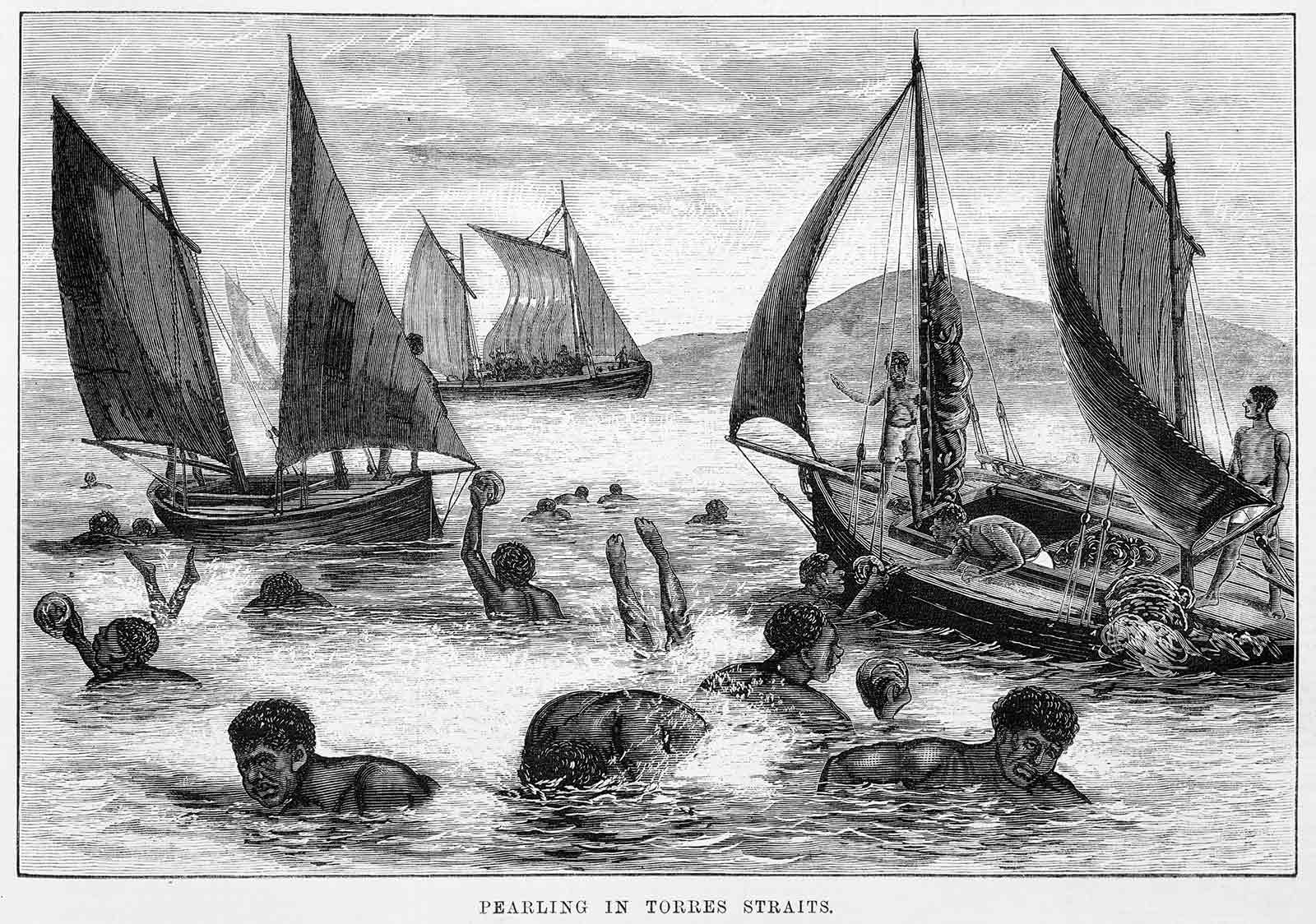
Wood engraving published in The Australasian Sketcher, April 1876.
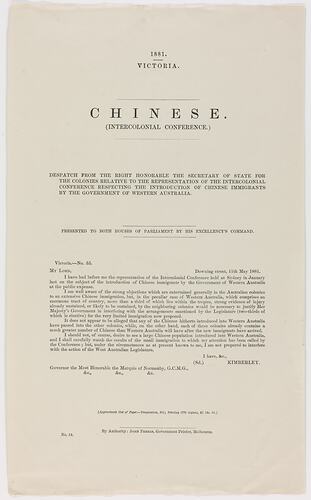
Note: This object includes derogatory references to a particular cultural group.
Document tabled in the Parliament of Victoria in 1881 entitled 'Chinese Intercolonial Conference'. It was printed in Melbourne by John Ferres at the Government Printing Office. The document is a despatch from the Colonial Secretary of State in London in response to concerns raised at an Intercolonial Conference in Sydney about the introduction of Chinese immigrants by the Western Australian Government. The Secretary states that there would need to be strong evidence of the negative impact, caused by Chinese immigration to Western Australia on the other colonies before the British Government could justify interference in Western Australian policy.
This document highlights the growing concern within the Australian colonies at the time about Chinese immigration. Anti-Chinese sentiment had been increasing in the Australian Colonies since the 1850s, when the discovery of gold in Victoria and New South Wales saw a substantial increase in Chinese immigration. Race related riots at Buckland River in Victoria in 1857 and Lambing Flat in NSW in 1860 were graphic illustrations of the extent of anti-Chinese feeling in the Australian Colonies. Despite this move by Western Australia to allow Chinese immigration, due to labour shortages, by 1888 all the Australian Colonies restricted Chinese Immigration which prepared the way for the Immigration Restriction Act and introduction of the White Australia policy when Australia Federated in 1901.
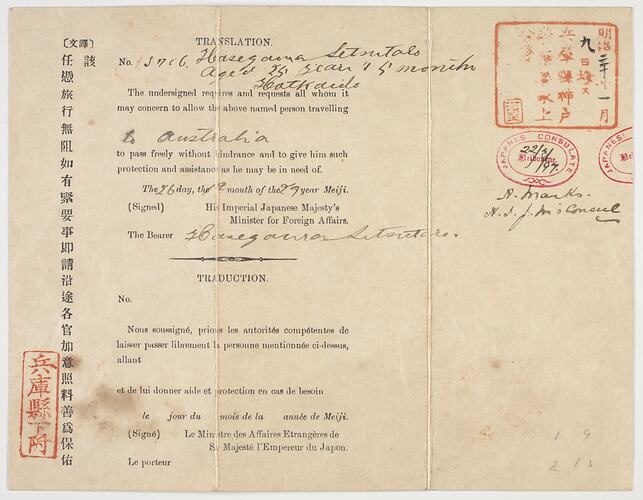
Single sheet passport issued to Setsutaro Hasegawa in Japan in 1897. Setsutaro migrated to Australia in 1897 at the age of 29. This was just four years before the introduction of the Immigration Restriction Act which virtually banned immigration to Australia from Asia.
Setsutaro worked as a houseboy in Melbourne before establishing a laundry business in Geelong. By 1910 he had married an Australian-born woman and had several children. In 1941 Setsutaro was interned at Tatura as an enemy alien, when he was over 70 years old. He was released at the end of World War II, and unlike most Japanese interns he was not deported. Setsutaro returned to Geelong where he remained for the rest of his life.
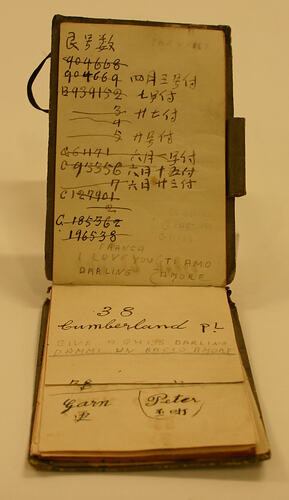
Notebook excavated at one of the digs on the Commonwealth Block between 1988 and 2003. This notebook is unique in that it has Chinese characters, English words and Italian words in it.
Little Lon was home to a diverse population. Germans, Jews and Irish arrived in the mid 19th century; Chinese, southern Europeans and Syrians (Lebanese) in the 1880s; and Italians in the 1890s. Immigrants sometimes brought objects with them to remind them of home, or purchased new items that re-affirmed national loyalties. Pipes, vases or plates were decorated with flags, military heroes, an Irish lyre or English roses. The amount of foreign currency excavated also attests to diversity of the immigrants who frequented Little Lon.
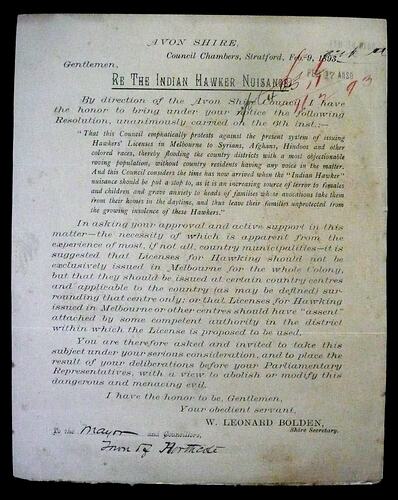
Note: This object includes a derogatory slur and derogatory references to particular cultural groups.
Printed notice of motion dated February 9, 1893, headed 'Avon Shire'. Addressed to the Mayor and Councillors of the Town of Northcote. The notice protests 'against the present system of issuing Hawkers' Licences in Melbourne to Syrians, Afghans, Hindoos and other colored races, thereby flooding the country districts with a most objectionable roving population, without country residents having any voice in the matter. And this Council considers the time has now arrived when the 'Indian Hawker' nuisance should be put a stop to, as it is an increasing source of terror to females and children, and grave anxiety to heads of families whose avocations take them from their homes in the daytime, and thus leave their families unprotected from the growing insolence of these Hawkers'.
The paper asks the Mayor and Councillors of the Town of Northcote to consider this resolution from the Avon Shire, and request their Parliamentary representatives to 'abolish or modify this dangerous and menacing evil' by suggesting that hawkers' licences should not be issued for the whole colony, but at certain country centres, or that Shires should give their assent to such a licence before a hawker could work within the shire boundaries.
Avon Shire in Gippsland (centered on the town of Stratford) sent this notice to every council in Victoria, seeking support for legislation to give shire councils more control over the issuing of hawker licences. The Shire's argument focuses on licences currently being issued to Middle Eastern and Asian migrants. At the time, hawkers' licences were issued by local magistrates.
The notice appears to have been removed from within the archives of the Northcote Town Council, where it was placed on 17 February 1893.


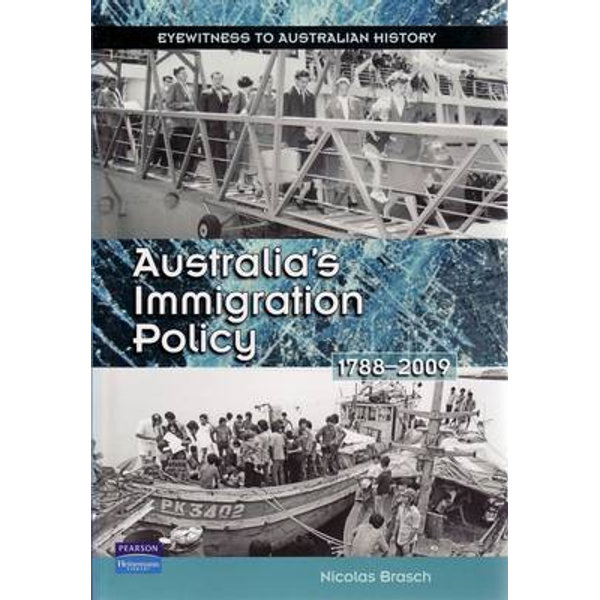 Australia's immigration policy : 1788-2009
by
Australia's immigration policy : 1788-2009
by
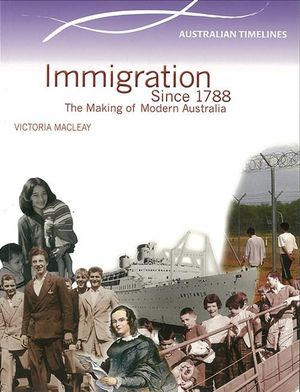 Immigration since 1788 : the making of modern Australia
by
Immigration since 1788 : the making of modern Australia
by
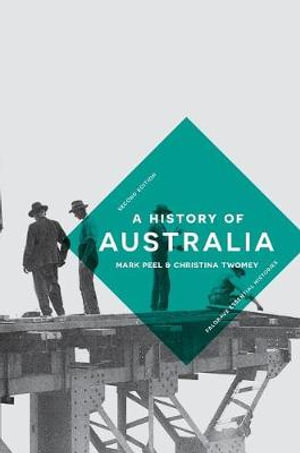 A history of Australia
by
A history of Australia
by
 Australia's heritage in profile
by
Australia's heritage in profile
by
 Focus on Australian history
by
Focus on Australian history
by
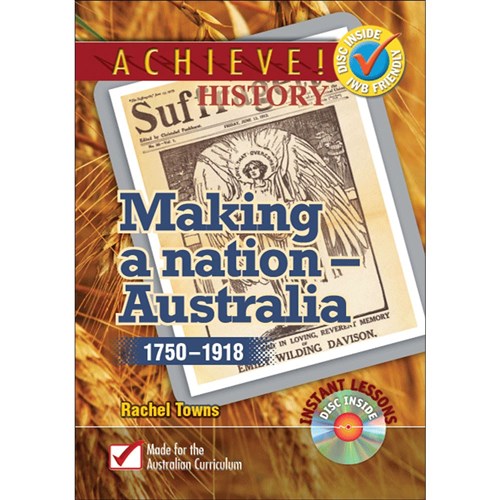 Making a nation : Australia, 1750-1918
by
Making a nation : Australia, 1750-1918
by